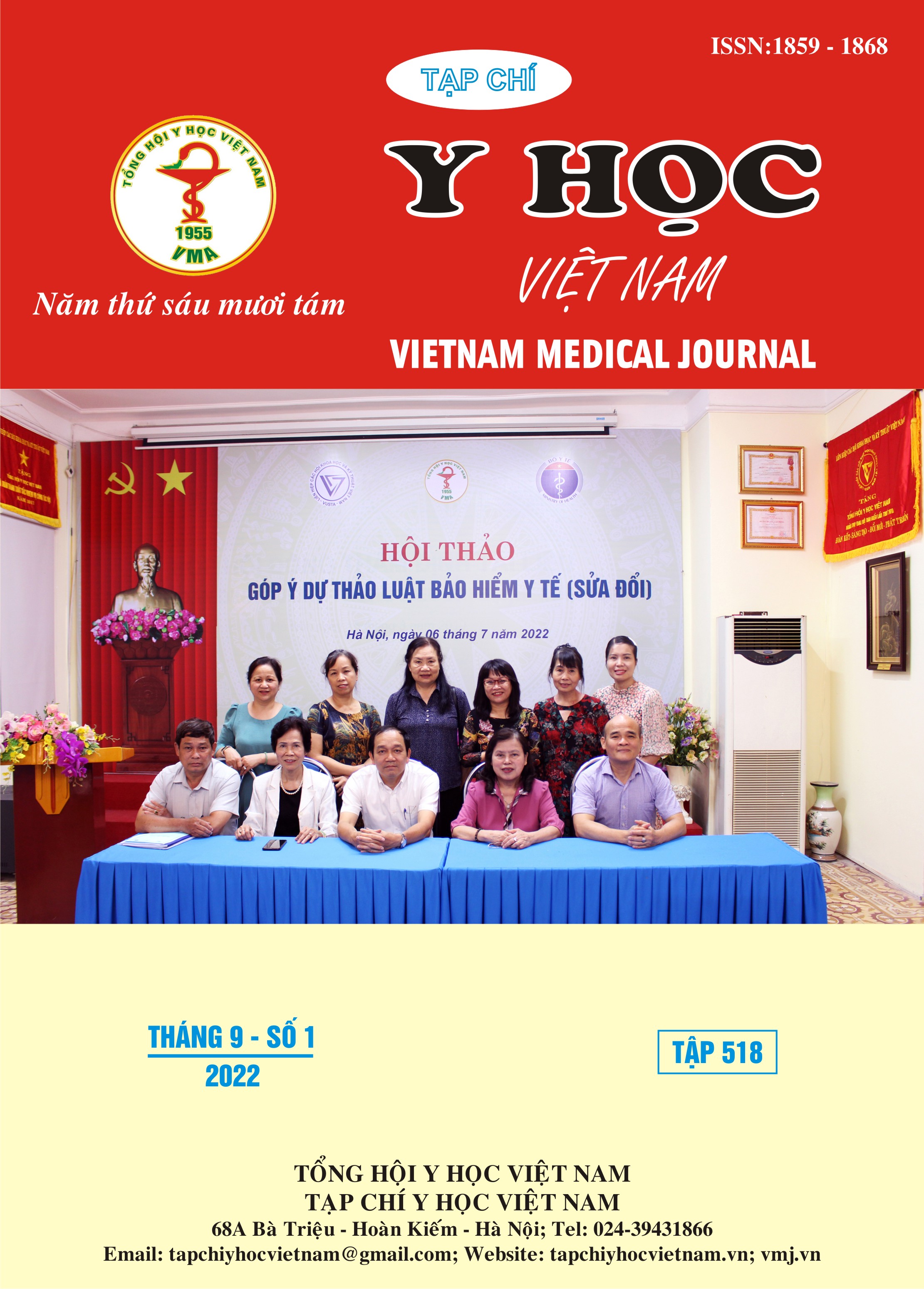ASSESSMENT OF QUALITY CONTROL SYSTEM OF CLINICAL BIOCHEMISTRY LABORATORY SIGMA METRICS AND QUALITY GOAL INDEX RATIO
Main Article Content
Abstract
Objective: The assessment of quality control system of biochemical indicators in Cobas 6000 by Sigma metrics at laboratory department of Hue University of Medicine and Pharmacy Hospital. Calculate the Quality Goal Index ratio (QGI). Materials aend methods: Six Sigma value is determined by the value of variation (CV) taken from internal quality control results for 3 months, bias taken from external quality control results for 3 months and total allowable error (TEa) referenced from CLIA. If Six Sigma values ≥ 6, 3 to 6, and < 3 are rated as world class, good and unacceptable, respectively. The quality target index ratio was calculated based on the Six Sigma and CV% value of each assay. Results: The laboratory's biochemical tests have Sigma values > 6 at both concentrations, including: Amylase, HDL-C, Triglyceride; Level 2 includes: AST, ALT, LDH. The test has a value of 3 < Sigma < 6 at both levels including: ALP, Cholesterol, LDL-C, Protein, Urea, Billirubin TP; at concentration level 1 include: Glucose, LDH, ALT, AST, Calcicum, uric acid; at concentration 2 include: uric acid, calcium, glucose, albumin, GGT, K+. The tests have sigma values<3 at both levels including: Chloride, Creatinine, Na+; at concentration level 1 include: Albumin, GGT, K+. Tests with Sigma<4 have a QGI>1.2 at concentration level 2, including: K+. Index 0.8 < QGI < 1.2 at concentration 2 includes: Albumin, Chloride. The remaining tests had QGI <0.8 at both levels: Billirubin TP, Calcium, Createnin, GGT, Protein TP, Sodium, Urea. At concentration 1 includes uric acid, albumin, chloride, and K+. Conclusion: The results of the study allow the laboratory to have an objective assessment of the effectiveness of biochemical tests. From there, the laboratory has a direction to monitor and correct for tests with low Six Sigma values.
Article Details
Keywords
QC, TEa, CV, Bias, Six Sigma, QGI
References
2.Westgard JO, Westgard SA (2006). The quality of laboratory testing today: an assessment of sigma metrics for analytic quality using performance data from proficiency testing surveys and the CLIA criteria for acceptable performance, Am J Clin Pathol, 125:343-354.
3. Desirable Biological Variation Database specifications, www.westgard.com/biodatabase1.htm. [(accessed on 4 March 2018)]
4. Westgard JO, Groth T. Power functions for statistical control rules. Clin Chem 1979;25:863-9.
5. Kumar BV, Mohan T. Sigma metrics as a tool for evaluating the performance of internal quality control in a clinical chemistry laboratory. J Lab Physicians. 2018;10:194-199.
6. Verma M, Dahiya K, Ghalaut VS, Dhupper V. Assessment of quality control system by sigma metrics and quality goal index ratio: a roadmap towards preparation for NABL. World J Methodol. 2018; 8:44-50.
7. Zhao HJ, Zhang TJ, Zeng J, Hu CH, Ma R, Zhang CB. Investigation and analysis of hemoglobin A1c measurement systems' performance for 135 laboratories in China. Chin Med J (Engl). 2017;130:1079-1084.
8. Bingfei Zhou1, 2. |. (2019). Practical application of Six Sigma management in analytical biochemistry processes in clinical settings. 2.
9. Westgard JO. Statistical Quality Control Procedures. Clin Lab Med. 2013 Mar 1;33(1):111–24.


